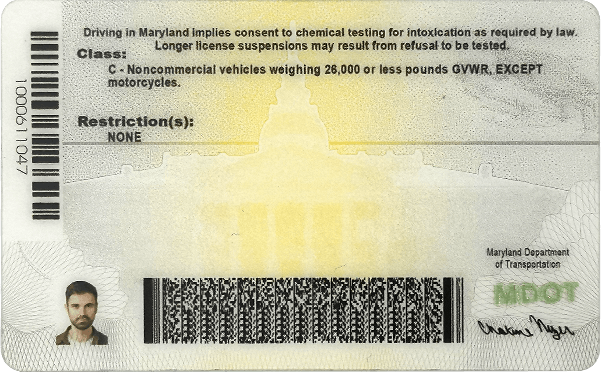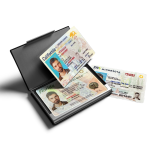Sporting goods stores often need to check customers’ driver’s licenses for various reasons. One of the main purposes is for age – verification. Some sporting goods, such as certain types of hunting equipment, high – powered air guns, or some sports supplements that may have age restrictions, require the store to ensure that the customer is of legal age to purchase them. Another reason could be for customer identification during transactions, especially for high – value items or when there are return and exchange policies that need to be associated with a specific individual.
The Initial Visual Inspection
The first step in the driver’s license check process is a visual inspection. Store employees will look at the front of the license. They will check for basic elements such as the customer’s photo. The photo should match the person standing in front of them. Any significant differences in appearance, such as a different hairstyle, significant weight change, or the presence of glasses in the photo but not in real – life (or vice versa) can be a red flag. They will also examine the license’s expiration date. An expired license may not be a valid form of identification for the store’s purposes, especially if the store has strict policies regarding up – to – date identification.

The license’s security features are also carefully observed. Most modern driver’s licenses have a variety of security features like holograms, microprinting, and UV – sensitive inks. For example, a hologram of the state’s seal or a specific symbol might be present on the license. Microprinting, which is text that is only visible under magnification, can add an extra layer of security. Employees are trained to recognize these features and determine if they are present and look authentic.
Verification of Information
After the visual inspection, employees may verify the information on the license. They will cross – check the name on the license with the name provided during the transaction. This is important, especially if the customer is using a credit or debit card for payment. The name on the card should match the name on the driver’s license. The address on the license can also be verified, although this is less critical in most cases, but it can be useful if the store needs to contact the customer regarding a product issue or a recall.

Some stores may also use electronic means to verify the driver’s license. There are systems available that can scan the license’s barcode or magnetic stripe (if present). These systems can quickly check with the relevant state motor vehicle department’s database to confirm the license’s validity, the information on it, and if there are any alerts associated with the license, such as a suspended or revoked status. However, not all stores have access to these advanced verification systems, and in many cases, a manual check suffices.
Handling Suspicious Licenses
If an employee suspects that a driver’s license is fake or has been tampered with, they need to follow a specific protocol. First, they should not accuse the customer directly. Instead, they can politely ask for additional forms of identification, such as a passport or a state – issued ID card. If the customer is unable to provide any other valid identification, the store may choose to refuse the sale, especially if the item in question has age or other restrictions.
In some cases, if the suspicion is strong enough, the store may contact local law enforcement. Law enforcement agencies are trained to handle and verify driver’s licenses and can determine if the license is indeed counterfeit. However, this is usually a last – resort measure and is only done when there is clear evidence of fraud or suspicion.
Record – Keeping
Some sporting goods stores may keep records of the driver’s license information they check. This is mainly for internal purposes, such as tracking customer purchases, especially for high – value or restricted items. The information recorded is usually limited to the customer’s name, license number, and the date of the transaction. However, stores need to be careful about how they store this information to comply with privacy laws. The data should be stored securely, either in a locked cabinet in a physical office or in a password – protected digital system.
Common Problems and Solutions
- Problem: Inconsistent Photo
Solution: If there is a significant difference between the photo on the license and the customer’s appearance, the store can ask the customer for an explanation. For example, if the customer has recently changed their hairstyle or lost/gained a large amount of weight, they may be able to provide a reasonable explanation. If the customer has a valid reason and can provide additional identification (such as a passport or a work ID), the store may choose to accept the driver’s license as valid. If not, the store may need to refuse the sale if age – verification is crucial for the product being purchased.
- Problem: Expired License
Solution: If the license is expired, the store can ask the customer for an alternative form of identification. A valid passport or a non – expired state – issued ID card can be acceptable in most cases. If the customer does not have any other valid identification, the store may choose to contact the customer’s bank or credit card company to verify their identity if the purchase is being made using a card. However, if the store has a strict policy against using expired licenses, they may need to refuse the sale.
- Problem: Missing Security Features
Solution: If a security feature that is expected to be on the license is missing, the store should first check if it is a new or updated license from the state. Some states may change their license design and security features over time. The store can contact the state motor vehicle department (either online or by phone) to verify if the license is still valid despite the missing feature. If it is determined that the license is fake, the store should follow its protocol for handling suspicious licenses, which may include contacting law enforcement.
- Problem: Inconsistent Information
Solution: If the name, address, or other information on the license does not match the information provided by the customer or the information on the payment card, the store should ask the customer for an explanation. It could be a simple error, such as a recent address change that has not been updated on the license yet. The store can ask for additional documentation to verify the correct information, such as a utility bill or a bank statement. If the customer cannot provide satisfactory documentation, the store may need to refuse the sale or take additional steps to verify the customer’s identity.
- Problem: Difficulty in Electronic Verification
Solution: If the store’s electronic verification system fails or cannot connect to the state database, the store can rely on manual verification methods. This includes a more in – depth visual inspection of the license and cross – checking as much information as possible. The store can also ask for additional forms of identification. If the situation persists and the store is unable to verify the license’s validity, they may need to make a judgment call based on the nature of the product being sold and the level of risk associated with the transaction. In some cases, it may be necessary to refuse the sale to avoid potential legal or security issues.
Fake ID Pricing
unit price: $109
| Order Quantity | Price Per Card |
|---|---|
| 2-3 | $89 |
| 4-9 | $69 |
| 10+ | $66 |



